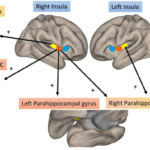 In August, the European Commission (EC) approved tofacitinib citrate (Xeljanz) to treat two pediatric conditions, as well as a prolonged-release version of the medication designed to treat adults with active psoriatic arthritis (PsA).
In August, the European Commission (EC) approved tofacitinib citrate (Xeljanz) to treat two pediatric conditions, as well as a prolonged-release version of the medication designed to treat adults with active psoriatic arthritis (PsA).
Active Polyarticular JIA & Juvenile PsA
The EC approved tofacitinib citrate to treat active polyarticular juvenile idiopathic arthritis (pJIA) and juvenile PsA. The approvals were for patients aged 2 years and older for whom treatment with disease-modifying anti-rheumatic drugs (DMARDs) proved inadequate.1
JIA is the most common type of arthritis in patients younger than 16, and pJIA and juvenile PsA are two of the six subtypes.2,3 pJIA, which occurs in about 25% of children with JIA, affects at least five joints—often on both sides of the body—and may affect both large and small joints.
In patients with juvenile PsA, joint symptoms and a scaly rash behind the ears and/or on the eyelids, elbows, knees, belly button and scalp may occur. Affected joints may include the wrists, knees, ankles, fingers or toes. Patients may exhibit joint pain and stiffness, swelling and reduced range of motion. Skin symptoms may occur before or after joint symptoms appear.
Background: These EC approvals were based on data from a phase 3 study in patients (n=225) age 2–18 years with pJIA (n=184), as well as other JIA subtypes (n=20), including juvenile PsA (n=21; NCT02592434).4 The 44-week, randomized, withdrawal, double-blind, placebo-controlled study evaluated the efficacy and safety of tofacitinib citrate in this patient population. The study had two phases: an 18-week, open-label, run-in phase (phase 1), followed by a 26-week double-blind, placebo-controlled, randomized, withdrawal phase (phase 2).5
At the end of phase 1, only patients who achieved the primary end point of at least a JIA ACR30 response were randomized to phase 2 (n=173). This primary end point is defined as at least a 30% improvement from baseline in any three of the following six response variables in patients with JIA:
- Number of joints with active arthritis (swelling/in absence of swelling, limited range of motion accompanied by pain/tenderness);
- Number of joints with limited range of motion;
- Physician global evaluation of disease activity (assessed on a Visual Analog Scale [VAS] of 0 [no activity] to 10 [maximum activity]);
- Parent/legal guardian/participant global assessment of overall wellbeing (assessed on VAS of 0 [very well] to 10 [very poor]);
- Childhood Health Assessment Questionnaire-Disability Index (CHAQ-DI): 30 questions in eight domains, each question answered on scale of 0 (without difficulty) to 3 (unable to do); scores of each domain were averaged to derive total CHAQ-DI score, which ranges from 0 (minimum dysfunction) to 3 (most severe dysfunction); and
- Erythrocyte sedimentation rate (ESR).
In phase 2 of the study, 142 patients had JIA, 15 had PsA and 16 had other JIA subtypes. Disease flare was defined as a 30% or more worsening in at least three of the six core response variables of the above variables, with no more than one of the remaining core response variables improving by at least 30% after randomization—an outcome measure used in JIA clinical trials.
The study’s key secondary end points were JIA ACR50/70 response rates and the change from phase 2 baseline in CHAQ-DI score at week 44.
Patients received tofacitinib citrate twice daily either as a 5 mg tablet or as a 1 mg/mL oral solution. The treatment form was based on the patient’s weight. If patients weighed less than 40 kg, they received the oral solution; if they weighed 40 kg or more, they received the tablet. The weight-based, twice-daily dosing was:
- 5 kg to <7 kg: 2 mg or 2 mL of tofacitinib citrate;
- 7 kg to <10 kg: 2.5 mg or 2.5 mL of tofacitinib citrate;
- 10 kg to <15 kg: 3 mg or 3 mL of tofacitinib citrate;
- 15 kg to <25 kg: 3.5 mg or 3.5 mL of tofacitinib citrate;
- 25 kg to <40 kg: 4 mg or 4 mL of tofacitinib citrate;
- ≥40 kg: 5 mg or 5 mL of tofacitinib citrate.
The results: The trial met its primary end point, which was statistically significant (P=0.0007). At week 44, the occurrence of disease flare in patients treated with tofacitinib citrate was 29% compared with 53% of patients treated with placebo.
Also at week 44, JIA ACR50/70 response rates and change from phase 2 baseline in CHAQ-DI scores were greater in patients who received tofacitinib citrate than in those who received placebo. The JIA ACR50 response rates were 66.7% vs. 47%, respectively, and the JIA ACR70 response rates were 54.3% vs. 37.1%, respectively. Also, the response rates for CHAQ-DI were 0.09 vs. 0.03 for tofacitinib compared with placebo. Statistical significance was not reported.
Additionally, time to disease flare was longer in patients treated with tofacitinib citrate than in patients who received placebo. These patients also had significantly fewer flares and improvements in signs and symptoms of disease and physical functioning.
Safety was similar between the study groups. The most common adverse effects were upper respiratory tract infections, nausea, vomiting, nasopharyngitis, fever and headache. No cases of death, opportunistic infection or tuberculosis occurred during the study.
Both formulations, the 5 mg tablet and 1 mg/mL oral solution of tofacitinib citrate, were approved to treat this patient population.
Prolonged-Release Tablet Approved
The EC also approved tofacitinib citrate in the form of a 11 mg prolonged-release tablet to treat adults with active PsA who do not tolerate methotrexate or for whom methotrexate or other DMARDs have proved inadequate. This once-daily, 11 mg tablet is an alternative treatment to the currently approved 5 mg tablet of tofacitinib citrate, which is taken twice daily.1
Michele B. Kaufman, PharmD, BCGP, is a freelance medical writer based in New York City and a pharmacist at New York Presbyterian Lower Manhattan Hospital.
References
- News release: Xeljanz (tofacitinib citrate) receives marketing authorization in the European Union for the treatment of active polyarticular juvenile idiopathic arthritis and juvenile psoriatic arthritis. Pfizer Inc. 2021 Aug 20.
- Juvenile idiopathic arthritis. Mayo Clinic. 2021.
- Juvenile idiopathic arthritis. The Arthritis Foundation. 2021.
- Efficacy study of tofacitinib in pediatric JIA population (NCT02592434). ClinicalTrials.gov. 2020 Apr 13.
- Brunner H, Synoverska O, Ting T, et al. Tofacitinib for the treatment of polyarticular course juvenile idiopathic arthritis: Results of a phase 3 randomized, double-blind, placebo-controlled withdrawal study [abstract: L22]. Arthritis Rheumatol. 2019 Oct; 71(suppl 10).


